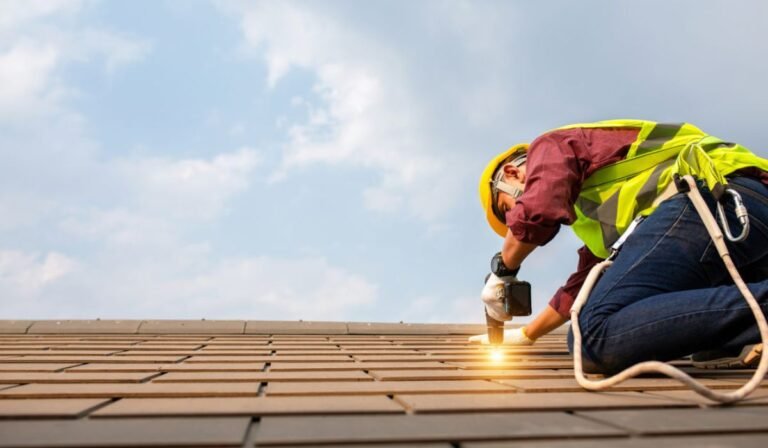Investing in a new roof is a significant expense for any homeowner. Due to the cost and importance of a roof, most manufacturers and contractors offer warranties to protect your investment. But roofing warranties are not all the same. Understanding what’s covered and what’s not can help you avoid surprises down the road.
In this article, we’ll break down the different types of roofing warranties, explain common coverage details, and highlight what exclusions you should watch for. When reviewing warranties, it’s important to choose a company experienced in roof leak repair Leesburg VA to ensure any future issues are handled promptly and professionally.
What Is a Roofing Warranty?
A roofing warranty is a written guarantee that protects the buyer from certain defects or failures related to the roofing materials or the installation.
There are generally three main types of roofing warranties:
- Manufacturer’s Warranty
- Craft or Contractor’s Warranty
- Extended or System Warranty
Each type has its scope and limitations, and understanding the difference between them is crucial.
1. Manufacturer’s Warranty
It is the most common type of warranty that comes with roofing products, especially shingles. A manufacturer’s warranty typically covers defects in the roofing materials themselves. For example, if your shingles deteriorate prematurely due to a manufacturing defect, the manufacturer might cover the cost of replacing them.
What’s Covered:
- Defective shingles or tiles
- Premature deterioration
- Structural flaws in the material
What’s Not Covered:
- Damage due to poor installation
- Normal wear and tear
- Weather-related damage (unless stated otherwise)
- Improper maintenance
Most manufacturer warranties are prorated. It means the coverage amount decreases over time. For instance, you may receive full coverage in the first few years. Still, after a certain point, you’ll only receive partial compensation for the materials.
2. Workmanship or Contractor’s Warranty
A contractor’s warranty covers the installation of your roofing system. This warranty guarantees that the roofing company followed industry standards and installed the roof correctly.
What’s Covered:
- Errors during installation
- Poor craft
- Issues arising from improper techniques or tools
What’s Not Covered:
- Material defects (those fall under manufacturer warranty)
- Damage due to natural disasters
- Unauthorized alterations or repairs made after installation
The length of an artistry warranty varies by contractor. Some may offer coverage for a few years, while others provide warranties lasting up to 10 or even 25 years. Always ask your contractor what their policy covers before signing a contract.
3. Extended or System Warranty
Some manufacturers and contractors offer extended warranties or system warranties that go beyond basic material or artistry coverage. These warranties typically cover the entire roofing system, including underlayment, flashing, and ventilation, provided that all products are from the same manufacturer and were installed by certified contractors.
What’s Covered:
- All roofing components used in the system
- Full labor and material costs for repairs or replacement
- Longer coverage periods
What’s Not Covered:
- Non-system components or accessories
- Poor maintenance
- Unapproved modifications or repairs
To qualify for a system warranty, you typically need to work with a certified contractor and use the manufacturer’s recommended installation methods. Though more expensive, these warranties provide greater peace of mind and comprehensive protection.
Common Warranty Exclusions
Even the most robust roofing warranty comes with limitations. Understanding what is not covered helps set realistic expectations and avoids costly misunderstandings. For more information on professional repair services, visit https://grbroofing.com/roof-repair-annapolis-md/ to see how local experts can help maintain and restore your roof.
Here are some standard exclusions:
- Acts of Nature: Storms, hail, earthquakes, and falling tree limbs are often excluded from coverage. These are considered insurance issues, not warranty claims.
- Improper Maintenance: Failing to keep the roof clean, remove debris, or inspect for damage can void your warranty.
- Poor Ventilation: If your attic lacks proper airflow, it can cause heat buildup and damage shingles. Many warranties require adequate ventilation as a condition of coverage.
- Unauthorized Repairs: Hiring someone who is not certified by the manufacturer or performing DIY repairs may void your warranty.
- Foot Traffic or Accidents: Damage caused by walking on the roof or by dropping heavy tools is usually not covered.
- Mold, Algae, or Mildew Growth: Some manufacturers exclude discoloration or staining unless the warranty specifically includes algae-resistant features.
How to File a Roofing Warranty Claim
If you believe your roof has a defect that’s covered under warranty, take these steps:
- Review the Warranty: Verify that the issue falls within the warranty coverage.
- Document the Problem: Take photos and write notes about when the problem started and what has occurred since.
- Contact the Contractor or Manufacturer: Reach out to the company that issues the warranty and explain the issue.
- Get an Inspection: The company may send a representative or inspector to examine the roof. Wait for a Decision: If the issue is covered, they will explain the next steps for repair or replacement.
Final Thoughts
Roofing warranties provide valuable protection for homeowners, but only if you understand their terms. Knowing what’s covered and what’s not can prevent frustration and unexpected costs. Consider the type and quality of warranty you’re receiving. A strong warranty is not just a marketing tool. It’s a safeguard for your home and a source of peace of mind for years to come.
